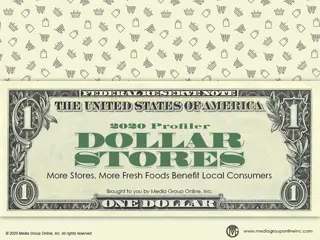Exploring Energy Stores and Transfers in Science Lessons
Dive into the fascinating world of energy stores and transfers through engaging science lessons. Recall different energy stores, common energy transfers, and create flow diagrams to illustrate energy transfers in various scenarios. Explore gravitational, elastic, magnetic, electrostatic potential energies, and understand kinetic, nuclear, and thermal energy. Engage in tasks to identify energy stores, describe energy transfers in specific situations, and create flow diagrams to visualize energy transformations. Delve into learning objectives centered around energy concepts such as joules and energy measurement.
Download Presentation

Please find below an Image/Link to download the presentation.
The content on the website is provided AS IS for your information and personal use only. It may not be sold, licensed, or shared on other websites without obtaining consent from the author. Download presentation by click this link. If you encounter any issues during the download, it is possible that the publisher has removed the file from their server.
E N D
Presentation Transcript
SciDoc Energy stores Energy stores Last Lesson Last Term Last Year Stretch & Challenge I do We do Test I do We do You do Do Now
SciDoc Keywords Learning Objectives Keywords Energy Store Transfer Joule Recall the different energy stores. Recall common energy transfers. Draw energy flow diagrams to show energy transfers. I do We do Test I do We do You do Do Now
SciDoc Potential energies Potential energies gravitational potential objects above the ground elastic potential objects that are stretched or squashed magnetic magnets electrostatic due to electric charges repelling or attracting Stretch: Give an example of an object storing elastic potential energy. I do We do Test I do We do You do LO:
chemical fuels, food, batteries kinetic moving objects nuclear when nuclei inside atoms join or separate thermal energy due to temperature SciDoc Stretch: Describe the energy transfers that occur as a battery powered remote control car starts moving, then goes up a hill & comes to a stop. I do We do Test I do We do You do LO:
SciDoc ENERGY STORES ENERGY STORES 2 minutes TASK Identify the energy stores in the pictures below. Be careful, not all are stores. I do We do Test I do We do You do LO:
Energy transfers: mechanically, electrically, by heating, by radiation (light and sound) SciDoc Stretch TASK Create a flow diagram to show the energy transfers when an electric kettle is used to boil water. You can show the energy transfers by using a flow diagram. I do We do Test I do We do You do LO:
SciDoc Energy transfers Energy transfers INDEPENDENT WORK 10 minutes TASK 1 Create flow diagrams to show the energy transfers taking place when: a. a ball falls in air b. an electric heater is switched on c. a car is accelerated by the thrust from its petrol engine d. a stone is thrown upwards e. a car hits a wall TASK 2 List two different objects you could use to light a room if you have a power cut. Then, for each object, create a flow diagram to show the energy transfers that occur when it lights up the room. I do We do Test I do We do You do LO:
SciDoc Joules Joules 2 minutes Energy is measured in joules (J). INDEPENDENT WORK TASK Look carefully at the amount of joules needed for each of the following actions: Picking an apple up 2 J needed Light bulb in a room for one hour 3,000 J Heating water for a cup of tea 180,000 J 1. Calculate the amount of apples you can pick up if you eat a Mars bar with 180 000 J. 2. Calculate the amount of cups of tea you can make with 720,000 J worth of energy. 3. Calculate the number of hours you can light your light bulb if you have 21,000 J of energy. I do We do Test I do We do You do LO:
SciDoc Plenary Plenary TASK When a roller coaster gets to the bottom of a descent, describe the energy transfers and changes to energy stored that happen if: 1. the breaks are applied to stop it 2. it goes up and over a second hill I do We do Test I do We do You do LO:























